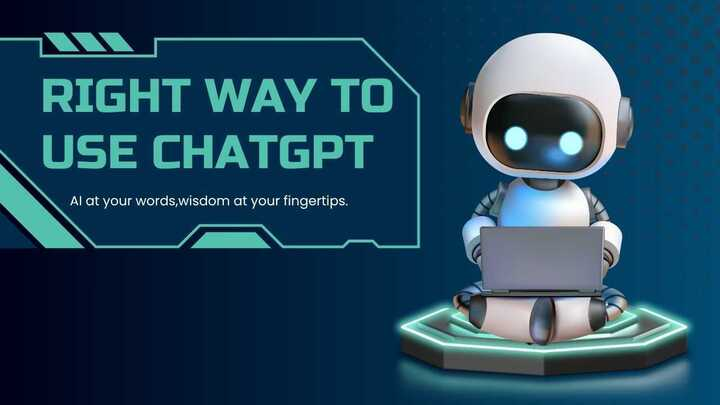Use a ChatGPT prompt to speed up your blog writing, generate fresh ideas, structure your content efficiently, and keep your natural voice. These prompts can help you overcome writer’s block, generate new ideas, and maintain your distinct voice. If you’ve ever been stuck on a blank screen, unable to begin or finish a blog, you’re not alone.
What You’ll Learn in This Blog
In this blog, I’ll show you how to write more intelligently, quickly, and effectively by using ChatGPT prompts like a pro. There is something here for everyone, regardless of your level of experience with blogging.
What’s a ChatGPT Prompt?
A ChatGPT prompt can be thought of as the dialogue you have with ChatGPT to achieve the desired outcome.It is similar to instructing a smart assistant, but the more intentional and detailed your instructions are, the better the results will be.
You will most likely get a straightforward request if you simply type, “Write a blog post.” However, if you say, “Write a 500-word blog post for beginners explaining SEO using metaphors about pizza in a humorous tone,” then we’re talking.
In short: The key to creating blogs that are both quicker to write and more fun to read is a ChatGPT prompt.
Why Use ChatGPT Prompts for Blogging?
Here’s why bloggers love working with ChatGPT prompts:
- Faster writing: No more waiting for the “muse” to strike.
- Smarter structure: Prompts can help you organize your blog like a pro.
- Better brainstorming: Stuck on blog ideas? Prompt it.
- Voice consistency: You can train ChatGPT to mimic your style.
- Less burnout: Because let’s be honest, staring at a blank screen for hours is exhausting.
The Right Way to Use ChatGPT Prompts for Blogging

Let’s dive into the actual techniques now. Here’s how you can start using ChatGPT prompts to level up your blog-writing game.
1. Start with “Idea-Generating” Prompts
Before you even write, use prompts to come up with smart, on-brand blog ideas.
Try these:
- Give me 10 blog post ideas for a freelance graphic designer selecting small businesses.
- What trending topics could a fitness coach write about in June 2025?
- List blog titles for a blog series on mental health for students.
Why it works: If You receive immediate, niche-specific inspiration rather than having to search for it.
2. Prompt for Outlines (Goodbye, Messy Drafts)
Blog outlining helps avoid that dreaded moment halfway through writing when you realize you’re rambling.
First, create a basic outline for your blog using ChatGPT.
Try this:
- Make a comprehensive plan for a 1500-word blog post about the advantages of mindfulness for business owners. Use H2 and H3.”
You will receive a well-organized framework with subheadings that you can either adhere to strictly or modify as necessary.
If you’re interested in creating blog outlines, please visit: How to use a blog outline generator.
3. Use Prompts to Match Your Writing Style
Make sure your prompts sound natural to ChatGPT rather than robotic. Give it a sample of your writing to start. Then request that it follow that tone.
Example prompt: Here is a blog I wrote. Analyze my tone and rewrite this paragraph in the same style: [Paste your writing + paragraph you want rewritten]
4. Prompt for First Drafts (But Don’t Stop There!)
Using ChatGPT to write your first draft is not cheating. It’s similar to having fast assistance get you through the challenging part.
Try this:
- Using this outline, write a conversational 1000-word blog post in a casual tone with bullet points and examples.
- Turn this bullet list into an engaging blog section with a friendly tone.
Important:
You still need to mold and shape the AI draft into your masterpiece, so think of it like clay.
5. Use ChatGPT for Blog Introductions and Hooks
Introduction writing is challenging. Hard, like. So let’s give ChatGPT a try.
Prompt example:
- Write 3 blog introductions for a post titled ‘Why Sleep Is Your Superpower.’ Make them punchy, informal, and story-driven.
- Propose a question-based hook for a blog about remote work burnout.
You can mix, match, and edit until it sounds like you.
6. Prompt for Killer Headlines & Titles
The Clickbait without the cringe is the title of a blog. Have ChatGPT assist you in creating ones that grab attention.
Try this:
- Suggest 10 blog titles for a post about how to create a personal brand on LinkedIn. Make them sound bold and benefit-driven.
- Turn this bland title into something snappy: ‘How to Use Excel for Budgeting.’
You’ll frequently find a spark that leads to something better or one you love.
7. Edit, Rewrite & Expand with Prompts
Often you will discover a spark that leads to something you love or something better.
Try these:
- Rewrite this section to be more clear and storytelling-based.
- Can you expand this paragraph into 200 words with examples and emotional hooks?
- Make this paragraph more engaged and concise.
Although you have superpowers now, you are still the editor.
8. Prompt for SEO-Boosting Content
To optimize your blog, you don’t have to be an SEO expert.
Try these:
- Propose 5 keywords and semantic terms related to this blog topic: [your topic].
- Rewrite this meta description to include the keyword ‘remote productivity tools’ and make it click-worthy.
- List 3 internal link suggestions for a blog about productivity hacks.
It’s like having your own mini-SEO assistant.
9. Repurpose Blogs into Other Content
Wrote an outstanding blog post? Don’t stop there; squeeze out as much as you can.
Prompt examples:
- Turn this blog into 5 tweet threads.
- Make a LinkedIn post using this blog excerpt.
- Summarize this blog into a 1-minute Instagram reel script.
Your content is now more effective.
10. Prompt ChatGPT to Ask You Questions
Put the roles back in reverse. Request that ChatGPT conduct your interview for you.
Try this:
- Ask me 10 questions to help me clarify my thoughts on writing productivity.
- Interview me like a blogger writing about solo travel.
This deepens your thinking and frequently uncovers hidden treasure.
What Makes a Good ChatGPT Prompt?
Great prompts are:
- Specific: Instead of “write a blog,” say “write a 1000-word blog for beginner marketers with humor and listicles.”
- Context-rich: Provide context, such as your audience, tone, or goals.
- Flexible: Don’t expect perfection. You’ll often refine the output.
- Conversational: Talk to it like a smart friend helping you write.
Don’t Forget: You’re Still the Writer
The brains of the operation are you, even with the best ChatGPT prompts.You add the humor, nuance, emotional intelligence, and practical experience that make writing human.ChatGPT is only an assistant. You’re the author.
Thus, utilize the tool while maintaining your voice.
Conclusion
Writing a blog becomes easier, faster, and more fun with the correct ChatGPT prompts. Prompts can help you overcome writer’s block and increase your creativity during the brainstorming and polishing phases.
However, keep in mind that you are still the author. ChatGPT is meant to be your helper, not a substitute. Instead of using it to replace your voice, use it to improve your process.
FAQs
Will ChatGPT make my writing sound robotic?
Not if you edit the output. Prompts give structure, your voice brings it to life.
Do I need tech skills to use ChatGPT?
No, Just type clear, specific instructions, no tech expertise needed.
Can ChatGPT replace me as a writer?
No, It’s a tool, not a replacement. You’re still the creative force.

